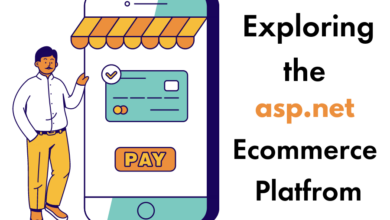Understanding Composable Commerce and the E-Commerce Ecosystem

Today’s consumers expect more than ever from their shopping experiences. They want to access product information, purchase and receive their items, and even return them quickly and easily, all in one go. The demands of modern consumerism are high, and businesses must provide a personalized experience leveraging technology that enables actual composable commerce.
Composable commerce is creating fully customized products on demand from a digital platform, which involves breaking up the traditional supply chain into smaller parts to tailor each part to a customer’s needs. For example, an online clothing store might have several pieces of clothing available for customization, and customers could combine different styles and sizes to create their unique outfits.
Personalization is critical when it comes to composable commerce. Consumers want to be able to customize their shopping experience and have access to specific product information that will help them make informed decisions.

Businesses must provide a personalized interface that allows customers to find the exact product they are looking for quickly and easily. It requires using data-driven personalization strategies, such as providing relevant recommendations based on customer preferences.
The next step in composable commerce is automation, which involves leveraging artificial intelligence (AI) and machine learning (ML) technology to automate inventory management, order processing, and delivery schedule. Automation also reduces labor costs by allowing businesses to reduce or eliminate manual tasks associated with traditional supply chain processes.
Finally, businesses must also ensure the customer experience is optimized for digital devices, ensuring that all online platforms and applications are mobile-friendly so customers can access and purchase products from their smartphones or tablets. Businesses must invest in technology such as responsive web design that optimizes user interface elements for different screen sizes.
Other advantages of using composable commerce
Composable commerce offers several other advantages that are well worth considering. One such advantage is improved scalability. Businesses can scale up or down depending on customer demand, allowing them to adjust quickly to market changes while offering a personalized experience with each transaction.
Additionally, composable commerce makes it easier for businesses to optimize their supply chains by reducing unnecessary costs associated with traditional retail stores and warehouses. Another advantage of composable commerce is increased speed and efficiency when fulfilling orders.
By breaking up the supply chain process into smaller pieces, businesses can streamline operations and reduce lead times between ordering and delivery, ensuring customers get their orders as quickly as possible and reducing wait times for products that need customization.

Furthermore, composable commerce also provides better data tracking for businesses. With this technology, companies can track customer interactions in real-time, such as what products they’re viewing or purchasing, to glean insights into buying behavior and tailor their marketing campaigns accordingly, making it much more efficient for companies to target customers at the right time with the appropriate message for maximum impact.
Overall, composable commerce provides several benefits that make it an attractive option for meeting the demands of modern consumers. Its ability to customize products on demand while providing data-driven personalization strategies, automation tools, and optimized user experiences across devices enables businesses to deliver a truly unique and engaging shopping experience that sets them apart.
What are the drawbacks?
While composable commerce is undoubtedly beneficial for businesses, it has some drawbacks. One of the main issues is the cost associated with implementing such technology. Companies must invest in software, hardware, and personnel to ensure everything runs smoothly and securely.
Additionally, compatibility issues between different platforms or devices may lead to delays in fulfilling orders or unanticipated costs if these issues still need to be resolved quickly. Composable commerce also has limits when it comes to personalization and tailoring products on demand.
While businesses can provide customers with various options, they cannot guarantee an exact match of what each customer wants due to limited resources and technological constraints.
Finally, the data-driven insights gleaned from customers’ interactions with the platform may only sometimes be reliable, as customer preferences can change quickly, leaving businesses unable to keep up.
Therefore, businesses must weigh the advantages and disadvantages of composable commerce before deciding. While it offers a great way to meet the demands of modern consumers, companies must ensure they have the resources and personnel to support such technology if they wish to reap its full benefits.
Conclusion
Composable commerce and personalization are essential components of modern consumerism. By leveraging the right technology and automation strategies, businesses can provide an enhanced shopping experience tailored to meet the needs of today’s consumers.
Companies can reduce costs with a personalized interface and optimized digital platforms while improving customer satisfaction rates. To succeed in today’s competitive market, businesses must stay ahead of the curve and embrace composable commerce and personalization to ensure a smooth customer experience.








